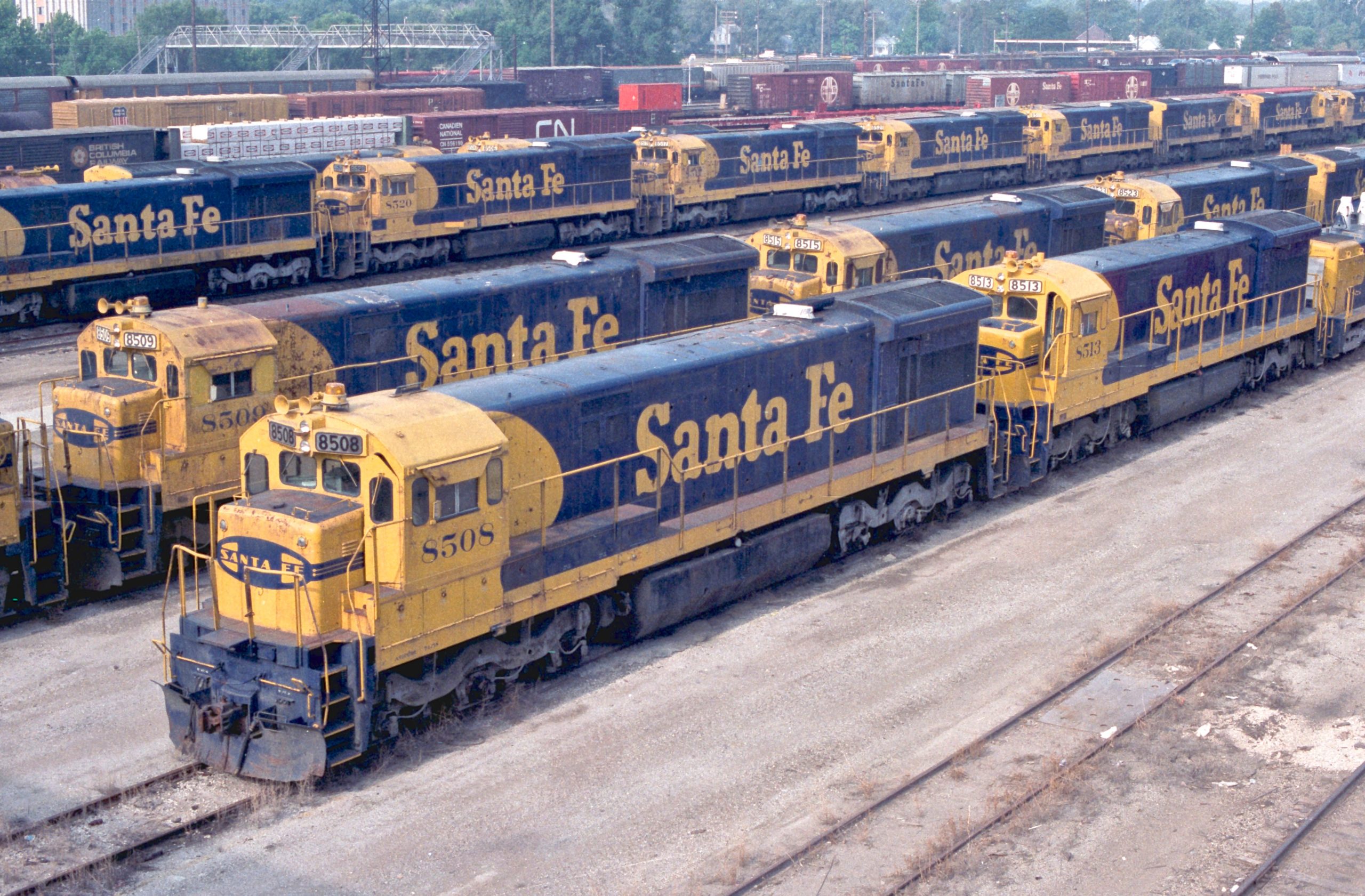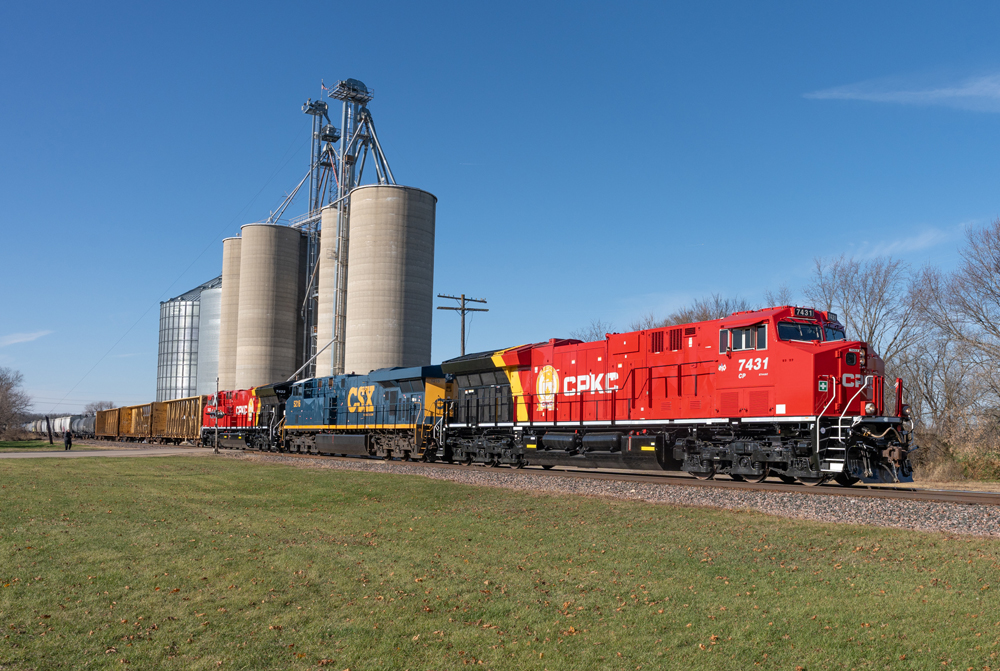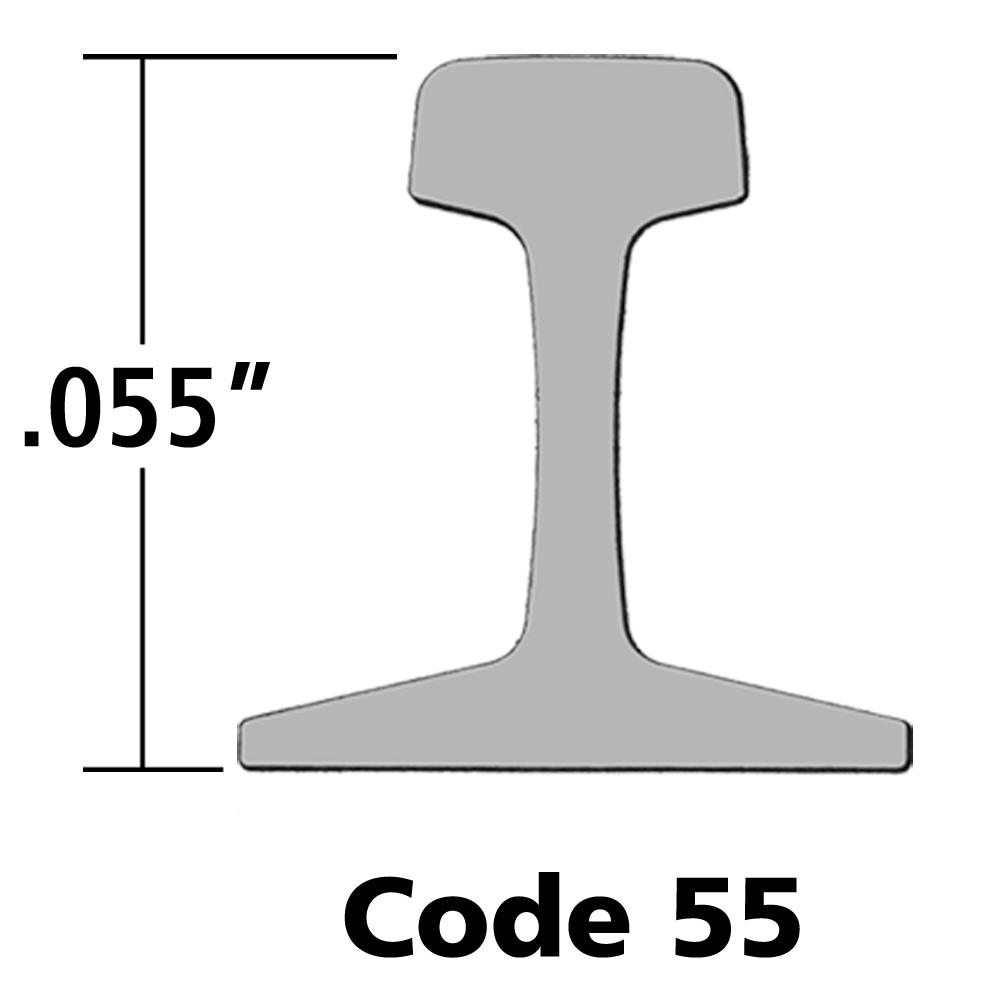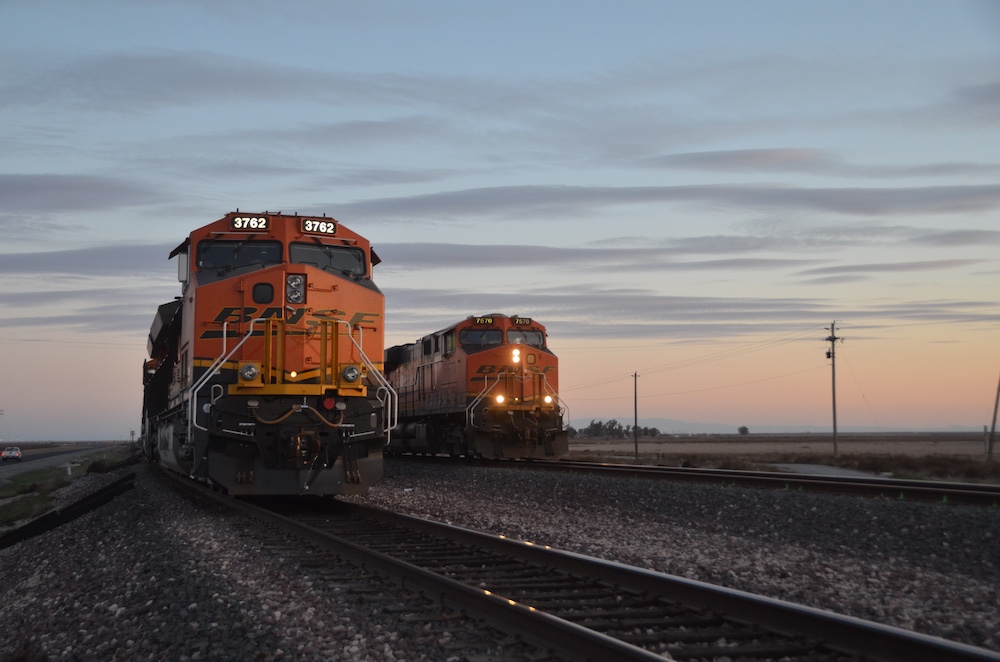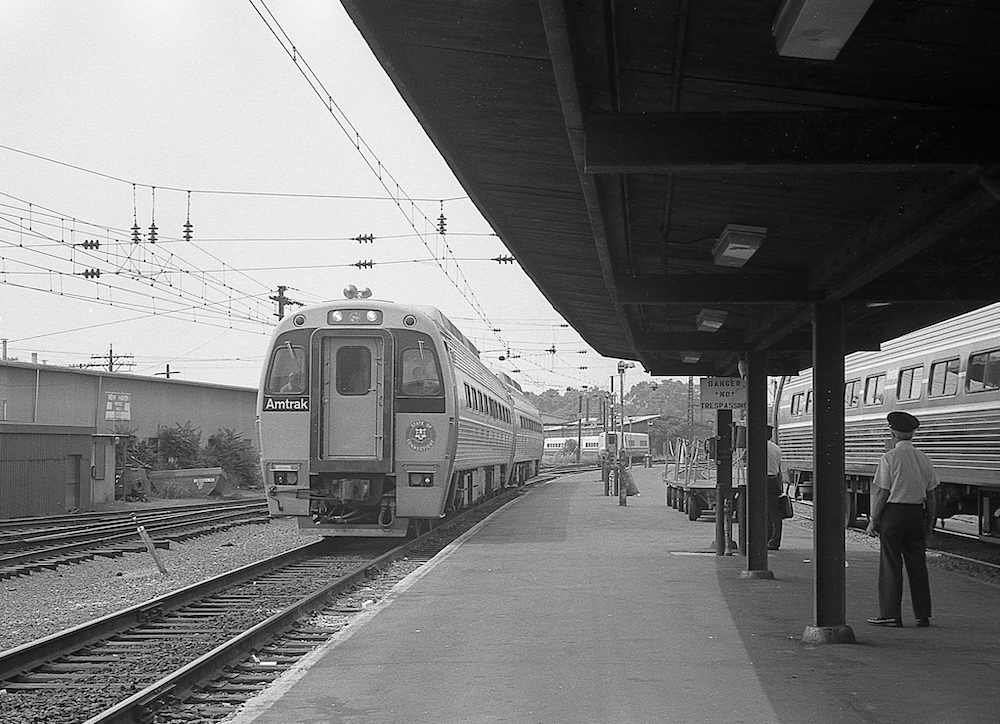A: Starting in the steam era, railroads have equipped their locomotives with a variety of auxiliary lights for grade crossing safety. Collisions with cars, trucks, and pedestrians are expensive and disruptive to railroad operations, so railroads often seek to improve safety above and beyond what is legally required.
Some rotary beacons actually rotated, but many had four bulbs which flashed in a circular pattern to simulate a rotating effect with no moving parts (but more light bulbs) to maintain. Other railroads used strobe lights on cab roofs.
An earlier technology used on steam locomotives and early diesels was an oscillating white light called either a Mars Light or a Gyralight by the two major manufacturers. These were white for visibility, and many locomotives also included a red bulb which activated automatically when there was an emergency brake application. This is a signal to other trains on double-track lines to stop, in case the brake application was caused by a derailment which blocked both tracks. Such a wreck killed 76 people in 1943 near Fayetteville, N.C., on the Atlantic Coast Line, when the southbound Tanami Champion derailed and was struck by its northbound counterpart at 85 mph. A red Gyralight might have prevented this wreck.
In the 1990s, the Federal Railroad Administration commissioned a study to find the most effective light setup for preventing grade crossing collisions. Steady ditch lights, flashing ditch lights, and strobes were all tested and rated for effectiveness, cost, maintenance, and other concerns. Conrail, Norfolk Southern, Burlington Northern, and Caltrain (San Francisco commuter rail) participated in the testing.
The final result favored what the report called “crossing lights,” now known as ditch lights. Effective Dec. 31, 1997, they are required on locomotives which operate at 20 mph over public road crossings. Locomotives built before Dec. 31, 1948, and not used regularly in commuter or intercity passenger service are considered historic equipment and are exempt from the ditch light requirement.
Strobe lights are sometimes used on remote control locomotives and Metra still uses oscillating white lights on its cab cars and locomotives, but they are otherwise uncommon. — Tyler Trahan





